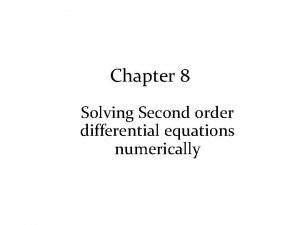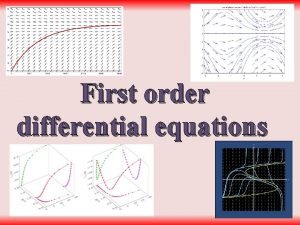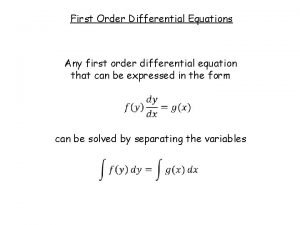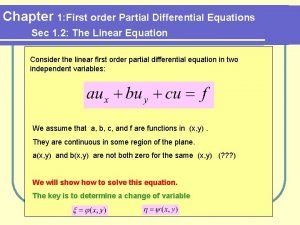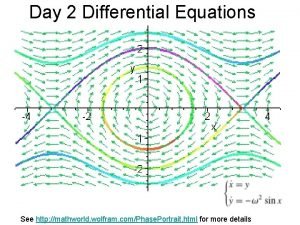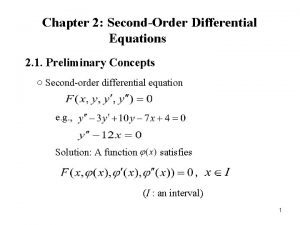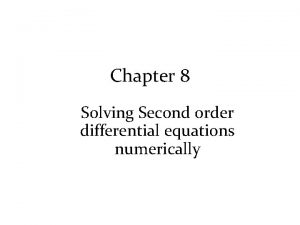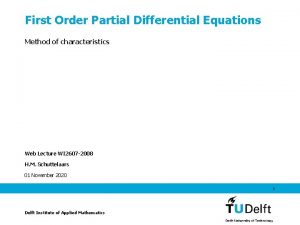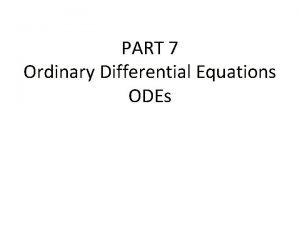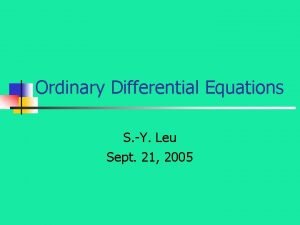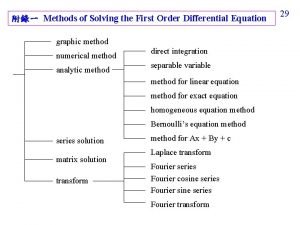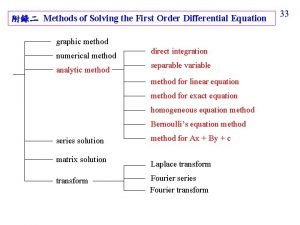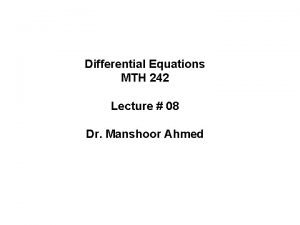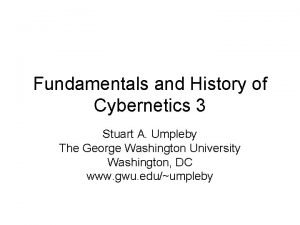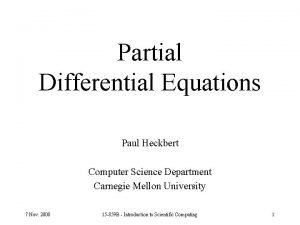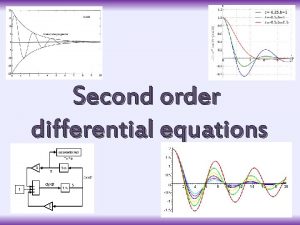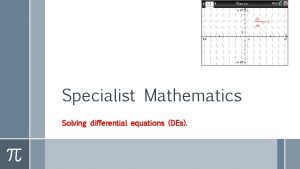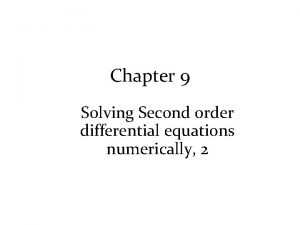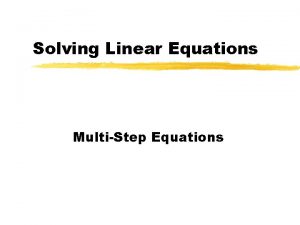Solving second order differential equations Welcome to the





















- Slides: 21

Solving second order differential equations Welcome to the session! • Please use the chat to say hi and let us know which department you are from • Please keep your microphone and video switched off. If you have any questions, ask them in the chat or use the raise hand button • Make sure to sign in with your full name (or a nickname and your ucard number) so that we can send any relevant resources after the session While you are waiting: What can be modelled using second order ODEs in real life?

Warm-up exercise Some applications • Mechanics: simple harmonic motion/vibrations • Electrical: circuits • Quantum mechanics: particle energy equations

Goals for today • Recap methods for solving homogeneous and inhomogeneous linear second order ODEs • Refresh the different types of solutions • Solve problems involving boundary or initial conditions

General form •

Homogeneous linear second order ODE •

Technique •

Technique •

Technique •

Technique •

Technique Homogeneous case – an example

Inhomogeneous linear second order ODE •

Technique •

Technique Proof for particular solution technique

Technique • Function type Guess A constant A finite product of the above The product of their respect guesses

Technique •

Technique Inhomogeneous case – an example

Technique Boundary/initial conditions Boundary conditions allow us to find the value of constants in our general solution. For a second order ODE, you will usually need two conditions!

Tell us what you think! We would love to hear your comments and feedback on this session! Please fill in this very short survey You need to log into MUSE, but it is anonymous Thanks for your input!

Need more help? Why not book a 1: 1 support session? • Free support for any aspect of maths/stats • You can ask questions in a judgement-free environment • Shown to be an effective method for reducing anxiety • Explanations tailored to your learning preference • Immediate feedback from tutors on your understanding

Website links www. sheffield. ac. uk/mash To book a one-to-one help session: www. sheffield. ac. uk/mash/bookings For more online help: www. sheffield. ac. uk/mash/resources

Contact details MASH Advisors Hope Thackray Marta Emmett Pete Hart h. thackray@sheffield. ac. uk m. e. emmett@sheffield. ac. uk peter. hart@sheffield. ac. uk Manager of MASH Jenny Freeman j. v. freeman@sheffield. ac. uk Maths And Statistics Help General enquiries mash@sheffield. ac. uk Resources and appointments at: www. shef. ac. uk/mash
 Damped pendulum equation of motion
Damped pendulum equation of motion How to solve linear ode
How to solve linear ode First order ode
First order ode What is a first order equation
What is a first order equation What is a first order equation
What is a first order equation Phase portrait plotter wolfram
Phase portrait plotter wolfram Symlicity
Symlicity Pendulum differential equation
Pendulum differential equation Method of characteristics pde second order
Method of characteristics pde second order 1st order derivative formula
1st order derivative formula Nonlinear ordinary differential equation
Nonlinear ordinary differential equation Variable separable
Variable separable First-order differential equations
First-order differential equations Higher order linear differential equations
Higher order linear differential equations First order change
First order change First order cybernetics and second order cybernetics
First order cybernetics and second order cybernetics Via optica
Via optica 27 miles per gallon into kilometers per liter
27 miles per gallon into kilometers per liter Second step problem solving poster
Second step problem solving poster Differential equations projects
Differential equations projects Ordinary differential equations ppt
Ordinary differential equations ppt Pde paula
Pde paula
